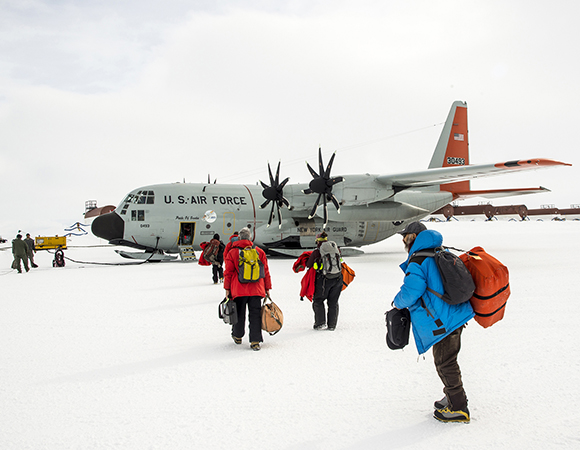
Leaving McMurdo Station for WAIS Divide by LC130 “Hercules.” (Photo/Nicolas Bayou, UNAVCO) 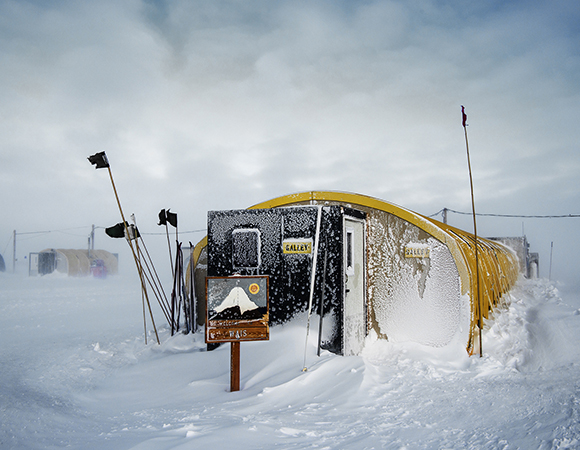
WAIS Divide Camp after a snow storm. (Photo/Nicolas Bayou, UNAVCO) 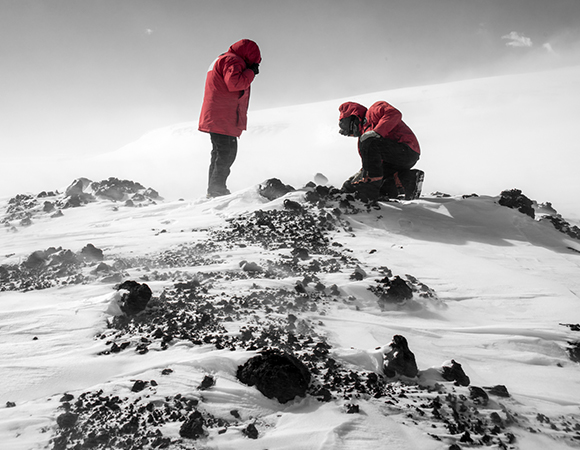
Dr. Terry Wilson and Dr. Eric Kendrick inspect the bedrock at Mount Takahe. (Photo/Nicolas Bayou, UNAVCO) 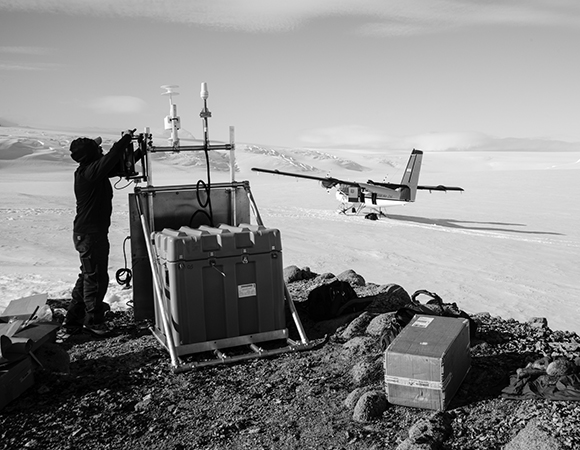
Mountaineer Mark Whetu installs the new GPS site at Gould Knoll (GLDK) on Thurston Island. (Photo/Nicolas Bayou, UNAVCO) 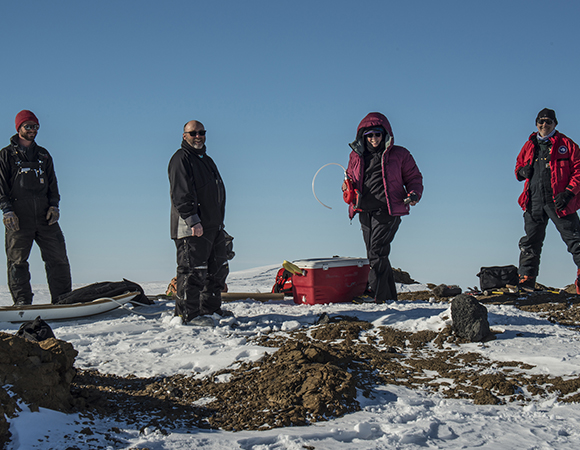
Drilling and installing the GPS monument. Co-pilot Jeff Amantea and captain Troy McKerral (Kenn Borek Air), Dr. Terry Wilson & Dr. Eric Kendrick of OSU (left to right). (Photo/Nicolas Bayou, UNAVCO) 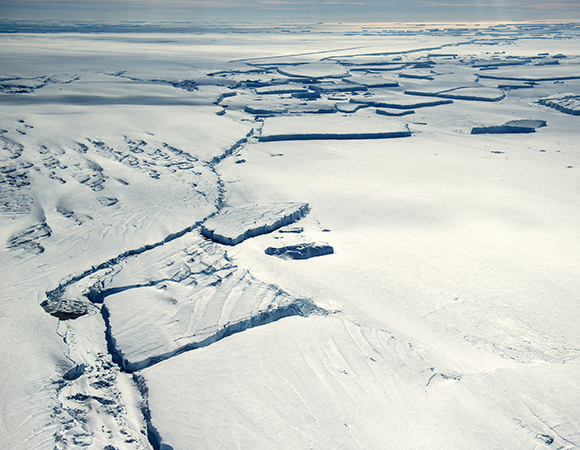
Thwaites Glacier terminal tongue. (Photo/Nicolas Bayou, UNAVCO) 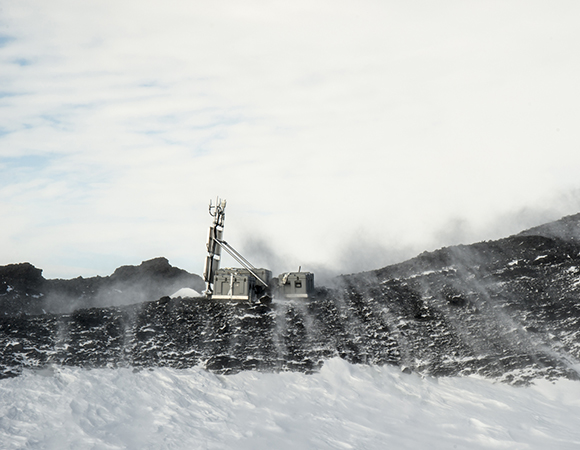
60 kts at Toney Mountain (TOMO) site. (Photo/Nicolas Bayou, UNAVCO) 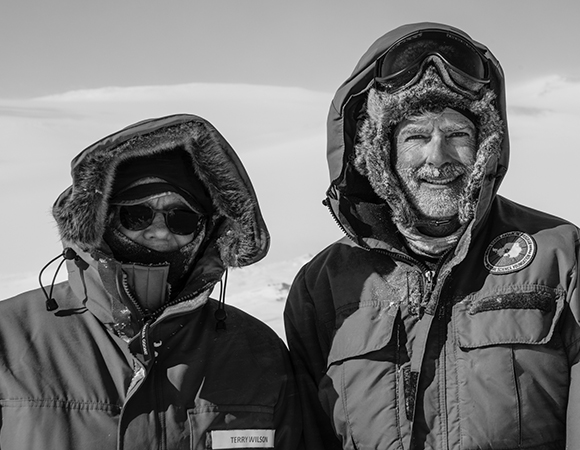
Dr. Terry Wilson and Dr. Eric Kendrick after installing the Mount Takahe GPS station (MTAK). (Photo/Nicolas Bayou, UNAVCO) 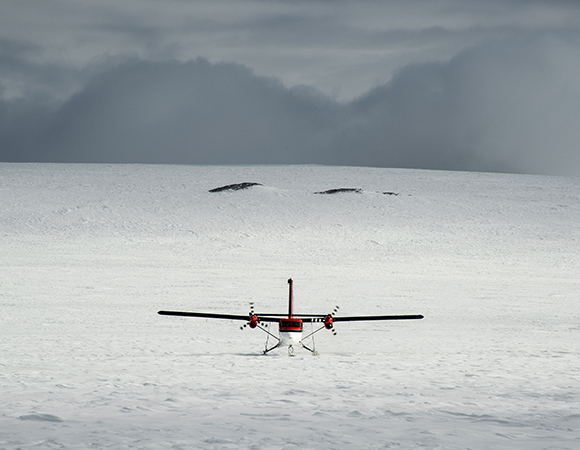
Twin Otter from Kenn Borek Air at Slater Rocks (SLTR). (Photo/Nicolas Bayou, UNAVCO) 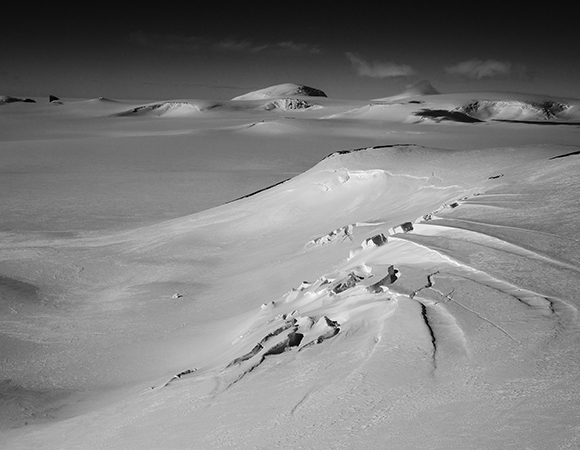
The Jones Mountains in which Miller Crag (MCRG) is located. (Photo/Nicolas Bayou, UNAVCO) 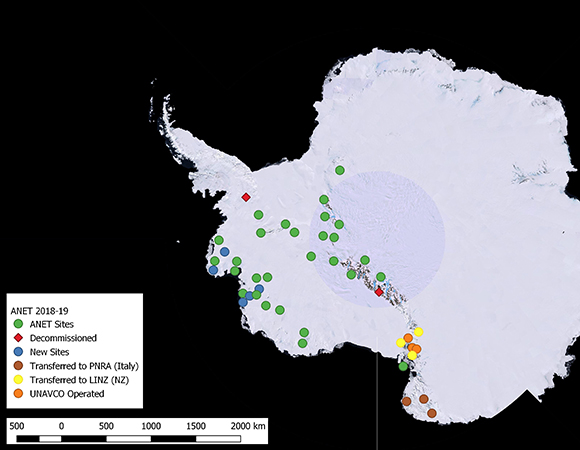
The status, as of time of writing, of ANET, the Antarctic component of POLENET. (Map/Nicolas Bayou, UNAVCO)
Project Overview
POLENET, a multiyear NSF-funded project, has entered its third award phase. The team for the 2018-19 Antarctic season, composed of six people, left McMurdo station for the remote field camp of WAIS Divide on December 13th, 2018. During the six-week deployment, the team installed five new GPS stations on the coast of Marie Byrd Land. In addition to the GPS stations, five seismic stations were installed by IRIS/PASSCAL engineer Aurora Roth of Socorro, NM. The team also took the opportunity to visit five previously installed stations to perform minor upgrades. Both GPS/seismic stations on the Thwaites Glacier were brought to the surface and should be operating during the International Thwaites Glacier Collaboration project.
Two first-generation ANET stations were decommissioned during this period, as the geometry of the network is shifted toward better coverage in West Antarctica. The British Antarctic Survey decommissioned Mount Sugg (SUGG) in the Ellsworth Mountains and Ramsey Glacier was decommissioned by UNAVCO engineers Annie Zaino, Keith Williams and Joe Pettit from McMurdo Station.
Significance
The POLENET Antarctic Network (ANET), established in 2007, consists of GPS/GNSS and seismic instruments located in the West Antarctic region (see Figure 11). Technology used within the network has evolved since its inception. A new-generation design for the GPS stations includes the low-power Resolute GNSS receiver from Xeos Technologies. With embedded Iridium communication capabilities, this lower-power receiver reduces station battery requirements by half. This results in a difference of about 800lb per site during station installation and removal compared to the original POLENET station design.
Challenges
Installing new stations involves a great deal of scouting. Potential sites were identified with the help of the Kenn Borek Air crew the previous season and satellite imagery provided by the Polar Geospatial Center (University of Minnesota). The presence of loose volcanic rock required the development of a new style of GPS/GNSS antenna monument suitable for such rock conditions. High winds and low temperatures pose an ongoing challenge for the team. While the weather was mostly good for installation of the new sites in 2018-19, challenging days included a memorable Toney Mountain maintenance visit with 60kts winds.
Project Information
- Principal Investigator(s): Terry Wilson, Michael Bevis, and Stephanie Sherman, The Ohio State University
- UNAVCO Engineer(s): Nicolas Bayou
- Dates: Dec. 13, 2018 – Jan. 19, 2019
- Location: WAIS Divide Camp and Marie Byrd Land, Antarctica
- Funding Source: NSF-OPP Award 1745074
- Map of Marie Byrd Land, Antarctica.
Related Links
Written by:
- Nicolas Bayou
- Posted: 11 March 2019
- Last updated: 4 June 2021
- Tags: GPS/GNSS, polar, project highlights



